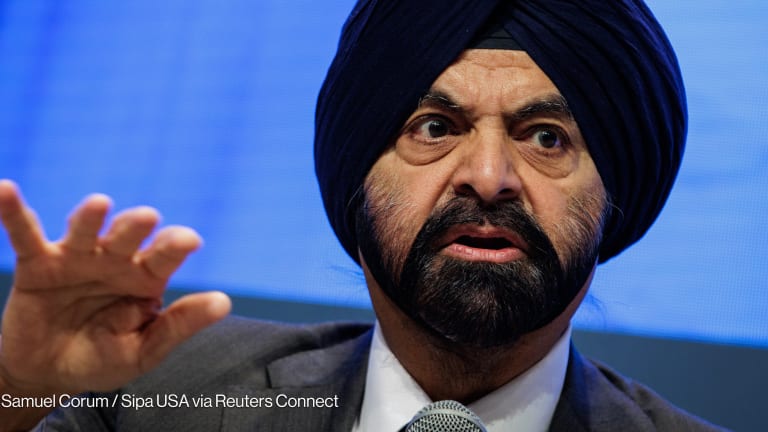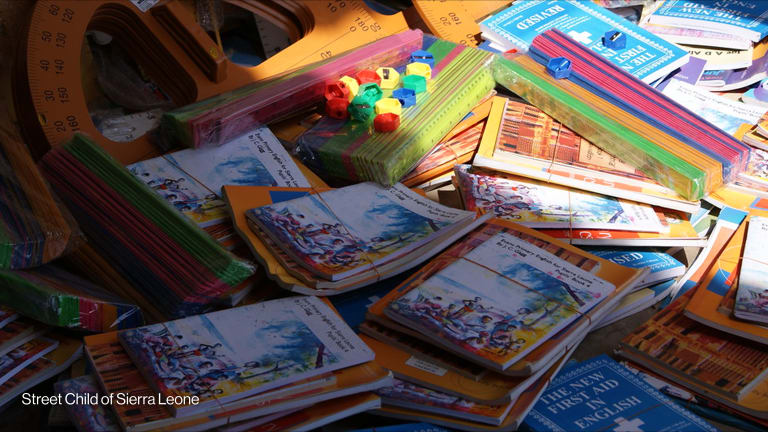
WASHINGTON — A World Bank-supported education partnership in Pakistan is failing to enroll the most marginalized children and incentivizes schools to exclude pupils who are less academic, according to a new report by Oxfam.
The provisional findings on the public-private partnership, which were revealed at a side event during the World Bank Spring Meetings in Washington, D.C., on Tuesday, “highlight some of the unintended consequences that can result in a high-stakes results-based financing model where schools are rewarded and sanctioned based on how they perform under scores,” according to Oxfam senior policy adviser Katie Malouf Bous.
See more coverage of the World Bank Spring Meetings:
► Q&A: The World Bank's pivot to fragile states
► Tackling corruption: 6 takeaways from the World Bank Spring Meetings
It builds on a major debate about the role of for-profit companies in global education. The issue is high on the agenda at this year’s World Bank meetings, due to its new “cascade” approach to development finance, which aims to crowd in private investment to projects that were previously supported by multilaterals.
Supporters say the approach can help to reach the 264 million children worldwide who are out of school. However, many remain convinced that education should be delivered only through government and have campaigned strongly against investments in for-profit school companies by development financiers.
On Monday, Kenyan civil society group East African Centre for Human Rights, or EACHRights, lodged an official complaint with the bank’s International Finance Corporation in relation to its $13.5 million investment in Bridge International Academies, a low-cost private school operator in Africa that has become a lightning rod in the debate.
The complaint, lodged with the IFC’s Compliance Advisor Ombudsman, alleges breaches of labor standards and health and safety requirements, as well as of national education regulations. It was made on behalf of the NGO, as well as eight Bridge employees and parents of Bridge students who have chosen to remain anonymous.
Speaking at the side session alongside Oxfam, Ashina Mtsumi, a policy officer for the Global Initiative for Economic, Social and Cultural Rights in Nairobi, which helped author the complaint, described Bridge’s work in Kenya as an example of market-based approaches to education being used as a “shortcut” that, instead of widening access, was “increasing marginalization … and creating a competitive pressure that undermines the right to education.”
However, Bridge told Devex it has rebutted the claims many times, and said a recent survey of parents in Kenya revealed that over 90 percent are happy with Bridge schools.
A spokesperson said: “Bridge is grateful for the ongoing support of its investors and adheres to IFC compliance standards. We would hope that EACHRights and others would support innovation in education reform in Kenya, where there are currently over a million children out of school.” It added that the “anonymous Kenyans” behind the complaint “do not reflect the views of our parents or our communities.”
CAO will now review the eligibility of the complaint over the next few weeks.
Oxfam says its results in Pakistan, which are preliminary and not yet published, also point to “the limits of the low-fee schools model” which relies on a “deprofessionalized teacher workforce” and operates within “low-resource constraints in terms of infrastructure, teaching and materials,” Malouf Bous said.
The World Bank has said it is already working with the Pakistani government and Punjab Education Foundation, a semi-independent body that oversees school privatization, to address many of the concerns raised. It emphasized that only a small portion of its education funding is delivered through public-private partnerships.
Private education in Pakistan
The development community has been experimenting with new ways of delivering education, including through private sector players, in response to enduring access and quality gaps in education systems in developing countries. Government spending on schooling in many countries is considered low and inefficient. Worldwide, an estimated 264 million children are out of school, and a further 600 million are in school but learning little, according to the World Bank.
Pakistan, despite being a lower-middle income country, has the second-highest number of out-of-school children in the world, at 24 million. The situation has led to a wave of education reforms starting in the 1990s, including handing over the management of thousands of government primary schools to private providers through a PPP model.
The Punjab province has been leading the charge through the Punjab Education Foundation, which administers the PPP and runs a variety of programs, including taking over failing government schools, establishing new schools, and facilitating school voucher and stipend programs to get more children into education.
See more related topics:
► The Future of Education: It's coming, but will it get here fast enough?
► Debate over for-profit schools in Uganda boils over as Bridge and others refuse to close
The World Bank has supported PEF as part of a broader education reform program in Punjab, and has “held it up as a model for other countries to follow,” Malouf Bous said.
Historically the bank has viewed PPPs as a way of introducing market forces to drive competition, enable wider access to education, and improve learning outcomes, she added.
However, recent studies suggest there is “inconclusive” evidence that PPPs improve learning, and the bank’s recent World Development Report on education takes a more cautious tone on them.
World Bank responds
The findings of Oxfam’s study are drawn from interviews with school principals and owners of 31 PEF-supported schools, as well as field observations, focus groups, and interviews with other stakeholders.
According to Malouf Bous, the research revealed that PEF schools enrolled few previously out-of-school children, with the majority transferring from other schools. Owners reported that despite not being charged fees, many children were still prevented from attending due to costs such as uniforms and meals.
Schools also said they actively excluded children unlikely to perform well on standardized tests, since PEF payments are linked to performance.
“School owners were frank and said we can’t include these children in our schools ... [because we] can’t afford the costs, they bring down our test scores and ... we have to meet these targets,” Oxfam’s policy adviser explained. The “high-stakes testing environment” leads to a “teaching to the test” approach which principals described as a “frustration,” she said.
Responding to Oxfam’s findings, Scherezad Latif, a World Bank education specialist, stressed that 95 percent of the bank’s education funding goes to supporting public education. She also pointed out that PEF supports 8,000 schools and questioned the representativeness of Oxfam’s sample of 31.
She said the majority of the bank’s support for PEF was directed toward the voucher support program which targets the poorest children, and that many of the findings raised by Oxfam are already being addressed. The bank is working with the government to “improve the content of the high-stakes exam” and how it is graded and administered.
However, she also said the bank is moving “more and more towards partnerships with nonstate actors,” which includes NGOs and low-cost private schools, “because there is an acute learning crisis” to which there is no one-size-fits-all solution, she said. “We all share the same goal, which is to see all children in school and learning,” she added.








